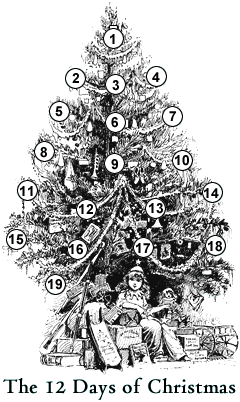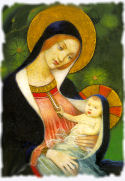Uploaded on 10 Sep 2011
You'll see highlights of the procession held at Naxxar on September 8, 2011.
Naxxar is one of the first parishes in Malta. It may have already been a parish in 1400.
The existing church was built in 1628. It is thought to have been designed by Tumas Dingli but others think it's the works of Vitor Cassar, son of Ġlormu. Its sides, the facade and the belfry towers were built in early 20th Century.
The wood statue of "Il-Bambina" was brought from Rome at the beginning of the 20th Century. The canopy and crown over the statue were made in 1923.
There are two Band Clubs in Naxxar: The Ġħaqda Mużikali Vittorja, Est 1916 and the Peace Band Club. Both are very active in the Parish.
Victory Day, September 8, is a national holiday in Malta. It is locally known as "il-Vitorja" (the Victory) and "il-Bambina" (Baby Mary), commemorating three events:
1. The birth the Virgin Mary
2. The victory of the Great Siege by the Knights of St. John against the Turks of 1565.
3. Italy surrendered during World War II in 1943 and turned against its former German ally.
We used the following as background music:
Music: "Innu Marċ" of the Vittorja Band Club - Music by Mro John Ivan Borg, lyrics by Ġorġ Bianchi
O Tfajla Mmakulata by Ferdinando Camilleri played by the Peace Band.
Nghannulek bil-Hlewwa by Ferdinando Camilleri played by the Peace Band.
Is-Sliem ghalik Marija by G Camilleri played by the Peace Band.
Antifona "Gloriosae Virginis", composition of Mro Paolo Nani
Choir Jubilate Deo.
Archpriest of the Naxxar Parish is Rev. Can Evan Caruana
Video/Editing by Choy Hong (Jasmine) Grech
Video production by Alfred & Choy Hong (Jasmine) Grech, Mosta, Malta.
----------------------------------------
Our Youtube Channels are:
MALTA, MALAYSIA & OTHER (Jasmine's Videos)
jasalf5959 Youtube Channel
http://www.youtube.com/user/JasAlf595...
MYCHOICE MUSIC VIDEOS
mychoicegrech1 Youtube Channel:
http://www.youtube.com/user/mychoiceg...
mychoicealfred2 Youtube Channel
http://www.youtube.com/user/mychoicea...
mychoicealfred3 Youtube Channel
http://www.youtube.com/user/mychoicea...
mychoicealfred4 Youtube Channel
http://www.youtube.com/user/mychoicea...
mychoicealfred5 Youtube Channel
http://www.youtube.com/view_play_list...
MALPEN04 MUSIC VIDEOS (Older Channel)
malpen04 "My Choice" series MASTER Links: (Music videos)
http://www.youtube.com/view_play_list...
http://www.youtube.com/view_play_list...
http://www.youtube.com/view_play_list...
http://www.youtube.com/view_play_list...
MALPEN04 MISCELLANEOUS (Non music video)
http://www.youtube.com/view_play_list...
Naxxar is one of the first parishes in Malta. It may have already been a parish in 1400.
The existing church was built in 1628. It is thought to have been designed by Tumas Dingli but others think it's the works of Vitor Cassar, son of Ġlormu. Its sides, the facade and the belfry towers were built in early 20th Century.
The wood statue of "Il-Bambina" was brought from Rome at the beginning of the 20th Century. The canopy and crown over the statue were made in 1923.
There are two Band Clubs in Naxxar: The Ġħaqda Mużikali Vittorja, Est 1916 and the Peace Band Club. Both are very active in the Parish.
Victory Day, September 8, is a national holiday in Malta. It is locally known as "il-Vitorja" (the Victory) and "il-Bambina" (Baby Mary), commemorating three events:
1. The birth the Virgin Mary
2. The victory of the Great Siege by the Knights of St. John against the Turks of 1565.
3. Italy surrendered during World War II in 1943 and turned against its former German ally.
We used the following as background music:
Music: "Innu Marċ" of the Vittorja Band Club - Music by Mro John Ivan Borg, lyrics by Ġorġ Bianchi
O Tfajla Mmakulata by Ferdinando Camilleri played by the Peace Band.
Nghannulek bil-Hlewwa by Ferdinando Camilleri played by the Peace Band.
Is-Sliem ghalik Marija by G Camilleri played by the Peace Band.
Antifona "Gloriosae Virginis", composition of Mro Paolo Nani
Choir Jubilate Deo.
Archpriest of the Naxxar Parish is Rev. Can Evan Caruana
Video/Editing by Choy Hong (Jasmine) Grech
Video production by Alfred & Choy Hong (Jasmine) Grech, Mosta, Malta.
----------------------------------------
Our Youtube Channels are:
MALTA, MALAYSIA & OTHER (Jasmine's Videos)
jasalf5959 Youtube Channel
http://www.youtube.com/user/JasAlf595...
MYCHOICE MUSIC VIDEOS
mychoicegrech1 Youtube Channel:
http://www.youtube.com/user/mychoiceg...
mychoicealfred2 Youtube Channel
http://www.youtube.com/user/mychoicea...
mychoicealfred3 Youtube Channel
http://www.youtube.com/user/mychoicea...
mychoicealfred4 Youtube Channel
http://www.youtube.com/user/mychoicea...
mychoicealfred5 Youtube Channel
http://www.youtube.com/view_play_list...
MALPEN04 MUSIC VIDEOS (Older Channel)
malpen04 "My Choice" series MASTER Links: (Music videos)
http://www.youtube.com/view_play_list...
http://www.youtube.com/view_play_list...
http://www.youtube.com/view_play_list...
http://www.youtube.com/view_play_list...
MALPEN04 MISCELLANEOUS (Non music video)
http://www.youtube.com/view_play_list...

















 During October, as in all of Ordinary Time (formerly known as Time After Pentecost), the Liturgy does not focus on one particular mystery of Christ, but views the mystery of Christ in all its aspects. We follow the life of Christ through the Gospels, and focus on the teachings and parables of Jesus and what it means for each of us to be a follower of Christ. During Ordinary Time we can concentrate more on the saints and imitate their holiness as Christ's followers.
During October, as in all of Ordinary Time (formerly known as Time After Pentecost), the Liturgy does not focus on one particular mystery of Christ, but views the mystery of Christ in all its aspects. We follow the life of Christ through the Gospels, and focus on the teachings and parables of Jesus and what it means for each of us to be a follower of Christ. During Ordinary Time we can concentrate more on the saints and imitate their holiness as Christ's followers.

